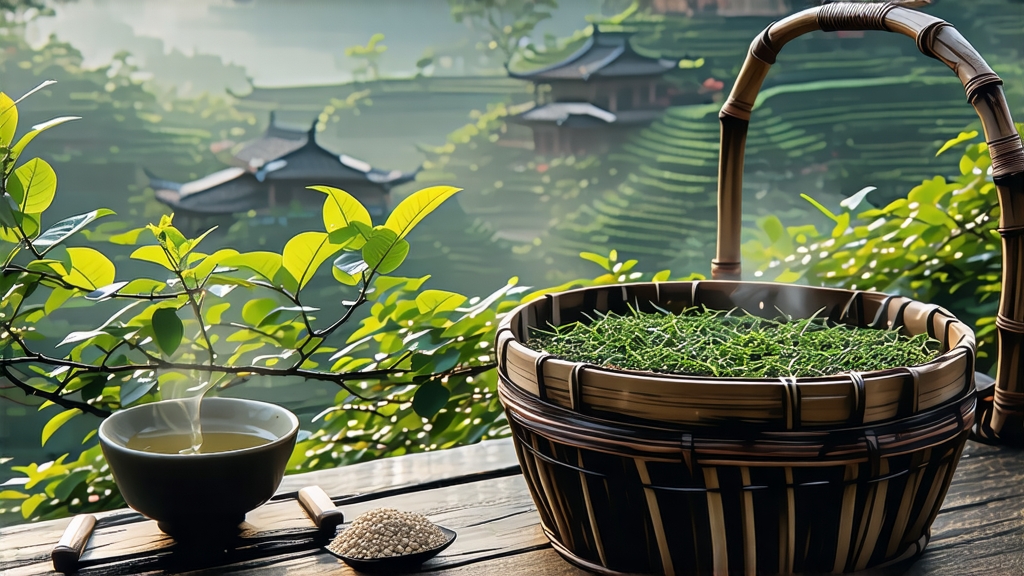
Tucked away in the southern folds of Guangxi Province, where the Xun and Yu rivers braid through mist-soaked granite peaks, lies the small county of Wuzhou. For more than 1,500 years this humid corridor has served as the throat of the ancient Tea-Horse Road’s southern branch, and it is here that Liu Bao—China’s oldest intentionally post-fermented tea—was born. Unlike the better-known Pu-erh of Yunnan, Liu Bao never rode the hype wave of collectors; instead it traveled quietly with coolies and riverboats to Hong Kong, Macau, and eventually the Chinatowns of Kuala Lumpur where dock-workers brewed it thick and sweet to cut through the cloying heat of the tropics. To understand Liu Bao is to listen to a subtler, earthier chapter of Chinese tea history—one scented with camphor forests, betel nut, and the sweet mustiness of river silt.
Historical records first name Liu Bao during the Liang Dynasty (502-557 CE), when local Tu ethnic people offered “dark drink from Cangwu” to the imperial court. By the Qing, the tea had become a strategic barter commodity; the 1852 edition of the Wuzhou Gazette notes that one picul of Liu Bao could be traded for half a picul of salt in Guangdong’s coastal markets. The British East India Company discreetly purchased Liu Bao through Hong Kong middlemen, blending it with Ceylon to add body to breakfast teas destined for London docks. Thus, while European tastemakers praised Keemun and Assam, Liu Bao slipped anonymously into their cups, lending malty depth without credit.
Liu Bao is not a single cultivar but a processing style applied to a group of local large-leaf Camellia sinensis var. sinensis bushes collectively called “Quntizhong,” or population bush. Growers recognize three micro-origins: the high-terraced villages of Liubao Town proper (altitude 300-500 m), the cooler shale slopes of Tashan, and the red-clay lowlands of Hezhou. Each site imparts a different tempo of fermentation: highland leaf ferments slower, yielding a cleaner, orchid-like sweetness, whereas lowland leaf darkens rapidly into tobacco and molasses notes. Purists insist that only tea picked before the Qingming festival retains enough enzymatic vigor to evolve gracefully through decades of aging.
The craft begins like green tea: dawn plucking, withering on split-bamboo racks under shade, and a short 30-minute kill-green in iron drums heated to 160 °C. But the soul of Liu Bao emerges in the next step—wet piling. Workers pile the still-moist leaf 60 cm deep inside spotless cement troughs lined with hemp cloth. Over the next 8–12 hours they mist the pile with mineral-rich spring water, turning it every 30 minutes so that internal temperatures hover at 55 °C. Indigenous microbes—primarily Aspergillus niger, Blastobotrys adeninivorans, and a local strain of Bacillus subtilis—feast on leaf polyphenols, converting catechins into theaflavins and novel imidazole alkaloids that give Liu Bao its trademark ruby-black liquor and blood-orange rim. When the leaf emits a sweet, almost over-ripe banana scent, the piling stops and the tea is sun-dried on rattan mats for three consecutive days, absorbing the resinous aroma of surrounding camphor and Chinese fir.
Unlike Pu-erh’s stone pressing, Liu Bao is traditionally packed into 50 kg cylindrical bamboo baskets called lang. Artisans split fresh mao bamboo into 4 mm-wide strips, weave them into a double-layered cage, line it with dried banana leaves, and pack the tea while still slightly warm. The porous basket allows micro-oxygenation; over years the tea mellows, trading astringency for a thick, medicinal sweetness that Chinese medicine likens to “ginseng soup.” Connoisseurs prize 25-year-lang Liu Bao for its ability to steep ten infusions without collapsing, each pour revealing successive layers of dark honey, sandalwood, and the nostalgic bite of betel nut.
To brew Liu Bao gongfu style, start with a 120 ml Yixing teapot seasoned only with darker teas. Break 6 g of leaf from the basket’s heart—avoid surface leaf that may carry bamboo tar—rinse for five seconds with 100